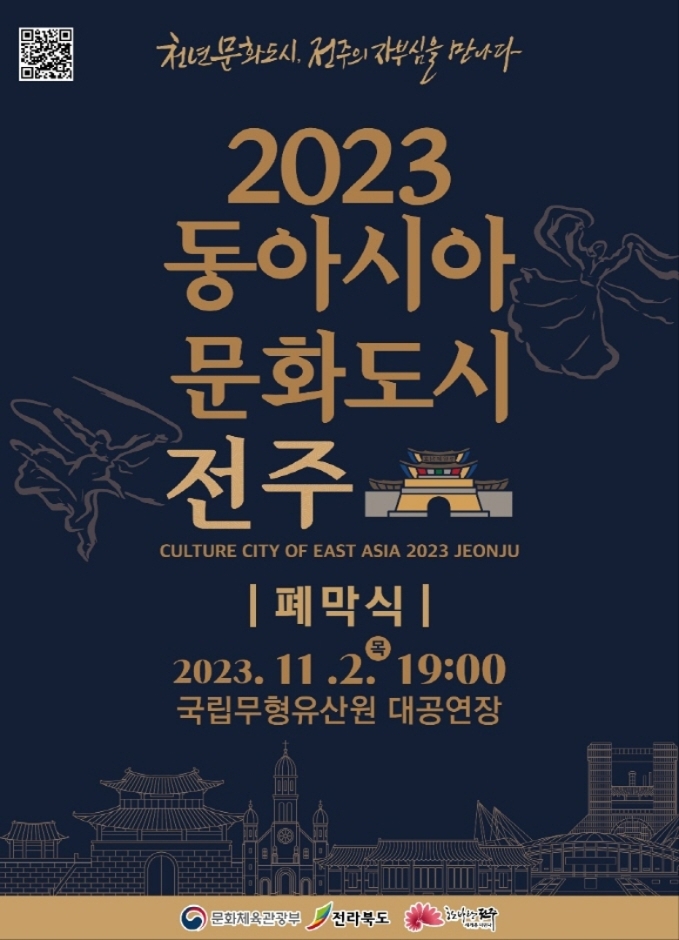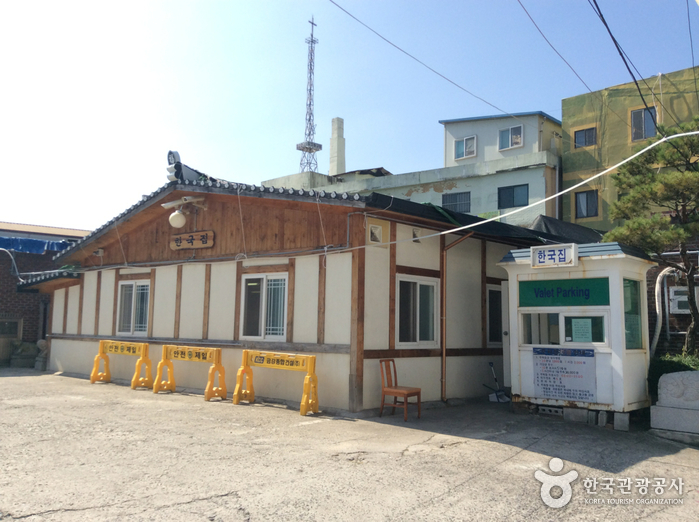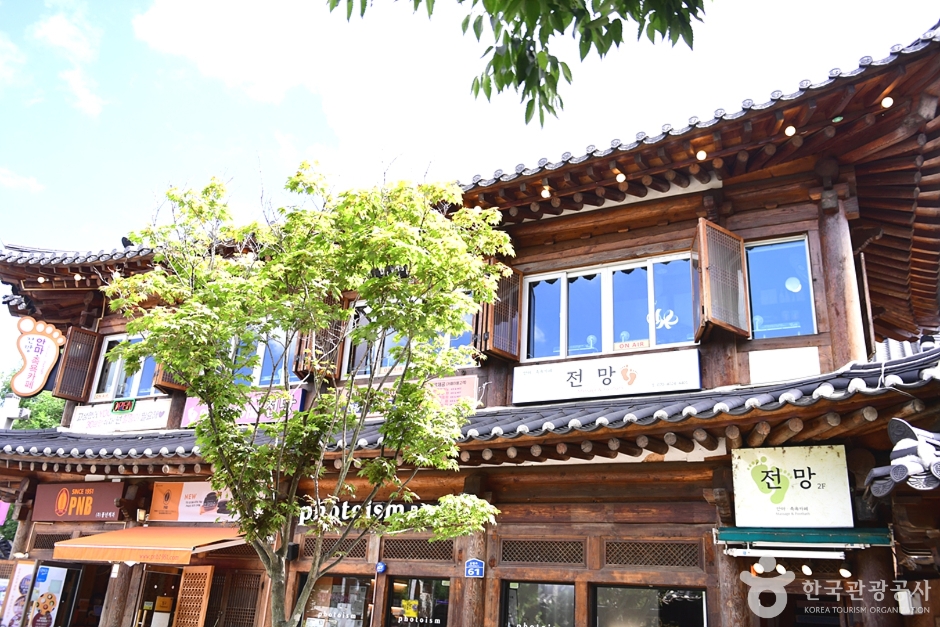Yedawon [Korea Quality] / 예다원 [한국관광 품질인증]
3.5 Km 184 2024-04-07
85-34 , Hyanggyo-gil, Wansan-gu, Jeonju-si, Jeonbuk-do
+82-63-228-8218, +82-10-3376-8987
Positioned at the foot of Omokdae in Jeonju, Jeollabuk-do, Yedawon is a hanok stay which offers guests a unique experience of traditional hanok life. Guestrooms have exposed timbers, walls lined with Korean paper, and framed works of calligraphy. The Lotus Room boasts a beautiful 8-panel folding screen with painted landscape, and large ink-and-wash artworks on the wall. The traditional experience program includes tea ceremonies, natural dyeing, hanji making and rice-cake making. Jeonju Hyanggyo Confucian School, Jeonju Hanbyeok Cultural Cente and Gyeonggijeon Shrine are all reachable on foot.
Yangsajae [Korea Quality] / 문화공간 양사재 [한국관광 품질인증]
3.5 Km 14399 2024-04-07
40 , Omokdae-gil, Wansan-gu, Jeonju-si, Jeonbuk-do
+82-63-282-4959
In Joseon times Yangsajae hanok stay in Jeonju Hanok Village, Jeollabuk-do, was part of the Jeonju hyanggyo or local Confucian school - a place of study and scholarship. Later the poet Lee Byeong-ki lived and wrote here, and later still, in 1987, the house became a public elementary school. Since 2002 it has been a hanok stay dedicated to cultural tourism and promotion of local history and traditions.
Gaeksa-gil (객사길)
3.6 Km 0 2024-04-07
10-1 Jungang-dong 2(i)-ga, Wansan-gu, Jeonju-si, Jeonbuk-do
+82-63-282-1330
Gaeksa, which was installed in every town during the Goryeo and Joseon periods, was a type of accommodation where foreign envoys or government officials from other regions stayed. Gaeksa can still be seen today in downtown Jeonju and there's a "Gaeksa-gil Street" at the main street of the old city center. The street features countless roadside shops and franchise restaurants so both Jeonju locals and tourists frequently visit the area. Also, Jeonju Gaeksa-gil is where the Jeonju International Film Festival is held every year. Considered as one of the three main Korean film festivals, the Jeonju International Film Festival primarily presents independent films and has discovered many hit movies and new actors. On one side of Gaeksa-gil, you can also find Jeonju Cine Complex and several movie theaters, which is why it is called the "Film Street." In the back of the Film Street, restaurants, cafes and clothing shops attract movie fans to form so-called "Gaengnidan-gil."
Gajok Hoegwan (가족회관)
3.6 Km 39857 2024-04-07
17 Jeollagamyeong 5-gil, Wansan-gu, Jeonju-si, Jeonbuk-do
Gajok Hoegwan is a restaurant specializing in Jeonju bibimbap. The restaurant opened in the 1970s, and its signature menu is Jeonju bibimbap, which is light and flavorful with a combination of freshly cut vegetables, meat, bean sprouts, and eggs. The restaurant is built in a hanok, giving it a traditional Korean atmosphere. It's a favorite among locals and tourists alike.
Culture City of East Asia Jeonju Closing Ceremony (동아시아문화도시 전주 폐막식)
3.6 Km 0 2024-07-02
95 Seohak-ro, Wansan-gu, Jeonju-si, Jeonbuk-do
+82-63-281-6314
The Culture City of East Asia is an agreement to promote diverse cultural exchanges between Korea, China, and Japan. Under the value of respect for cultural diversity among Korea, China, and Japan, each year one city from each country is designated as a “Culture City of East Asia” to practice the spirit of “East Asian consciousness, cultural exchange and convergence, and understanding of other cultures.” (Source: Culture City of East Asia website)
Han Kook Jib (한국집)
3.6 Km 14713 2024-04-07
119, Eojin-gil, Wansan-gu, Jeonju-si, Jeonbuk-do
+82-63-284-0086, 2224
Han Kook Jib was the first Korean restaurant to sell jeonju bibimbap since 1952, boasting a tradition that has been passed down through three generations. The restaurant offers dishes such as jeonju bibimbap, doenjang jjigae (soybean paste jjigae), yukgaejang (spicy beef soup), dolpan bulgogi (stone-grilled bulgogi), which are made using Korean ingredients like red chili paste, soybean paste, and soy sauce.
Jeonmang Foot Bath Café (안마 족욕 카페 전망)
3.6 Km 0 2024-04-07
61 Eunhaeng-ro, Wansan-gu, Jeonju-si, Jeonbuk-do
Jeonmang Foot Bath Café is located inside Jeonju Hanok Village. Visitors can enjoy aromatic foot baths to relieve the fatigue from traveling while enjoying the view of the quaint hanok village. There are a variety of bath bombs, such as aroma, peppermint, and rosemary. The foot bath and shoulder massage come with a free drink and take about 40 minutes.
Royal Portrait Museum (어진박물관)
3.6 Km 19472 2024-04-07
44, Taejo-ro, Wansan-gu, Jeonju-si, Jeonbuk-do
+82- 63-231-0090
Opened on November 6, 2010, the Royal Portrait Museum is one of the newest attractions of Jeonju, located within the Gyeonggijeon Shrine. Royal Portrait Museum is a valuable museum as a new tourism resource of Jeonju as well as Gyeonggijeon Shrine and the Portrait of King Taejo, as well as other various high-class exhibitions to preserve, manage, and enhance the glorious cultural assets of Joseon royal family. The museum is comprised of one above-ground level and one underground level with an area of 1,193.71 square meters. The Portrait of King Taejo and six other king’s portraits (Portrait of King Sejong, King Yeongjo, King Jeongjo, King Cheoljong, King Gojong, and King Sunjong) are exhibited on the first floor. The portraits are preserved in temperature- and humidity-controlled cases. In addition, the museum houses History Hall, Palanquin Hall, a planned exhibition hall, resting area, management office and storage room for relics. Palanquin Hall exhibits Hyangjeong (Palanquin for Incense Burner and Case), Sinyeon (Palanquin for Royal Portrait and Palanquin for Mortuary Tablet), Chaeyeo (Palanquin for High Officials), Gagyo (Palanquin for Ritual Items) featuring Korea’s sole preserved palanquin. History Hall houses approximately 80 relices related to Gyeonggijeon Shrine and Jogyeong Shrine, ancestral ritual ceremony, building, and others relics. Since the museum's opening, it makes continual efforts to become a central place for Jeonju residents to fulfill their cultural feelings. The museum operates various program like exploring famous historic sites in Gyeonggijeon Shrine, hands-on programs such as a guard experience to protect the shrine, and duplicating Gyeonggijeon Shrine’s relics using traditional portrait-making techniques.
Jeonju Handicraft Exhibition Hall - Jeonju Hanok Village Branch [Tax Refund Shop] (전주공예품전시관 전주한옥마을)
3.6 Km 1 2024-04-19
15, Taejo-ro, Wansan-gu, Jeonju-si, Jeollabuk-do
-
![Yedawon [Korea Quality] / 예다원 [한국관광 품질인증]](http://tong.visitkorea.or.kr/cms/resource/91/2594991_image2_1.jpg)
![Yangsajae [Korea Quality] / 문화공간 양사재 [한국관광 품질인증]](http://tong.visitkorea.or.kr/cms/resource/41/2999041_image2_1.jpg)





 English
English
 한국어
한국어 日本語
日本語 中文(简体)
中文(简体) Deutsch
Deutsch Français
Français Español
Español Русский
Русский